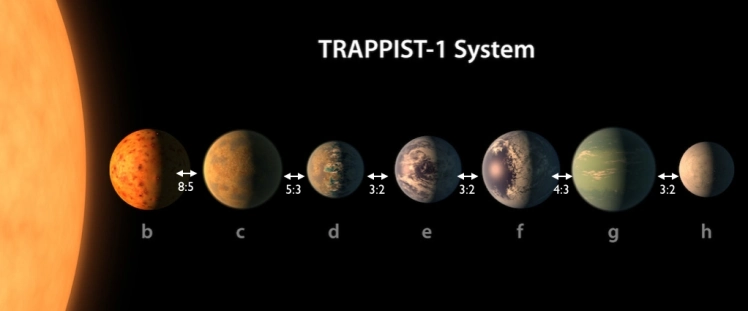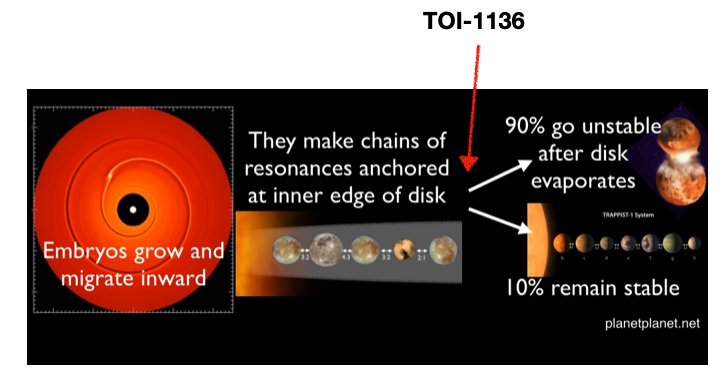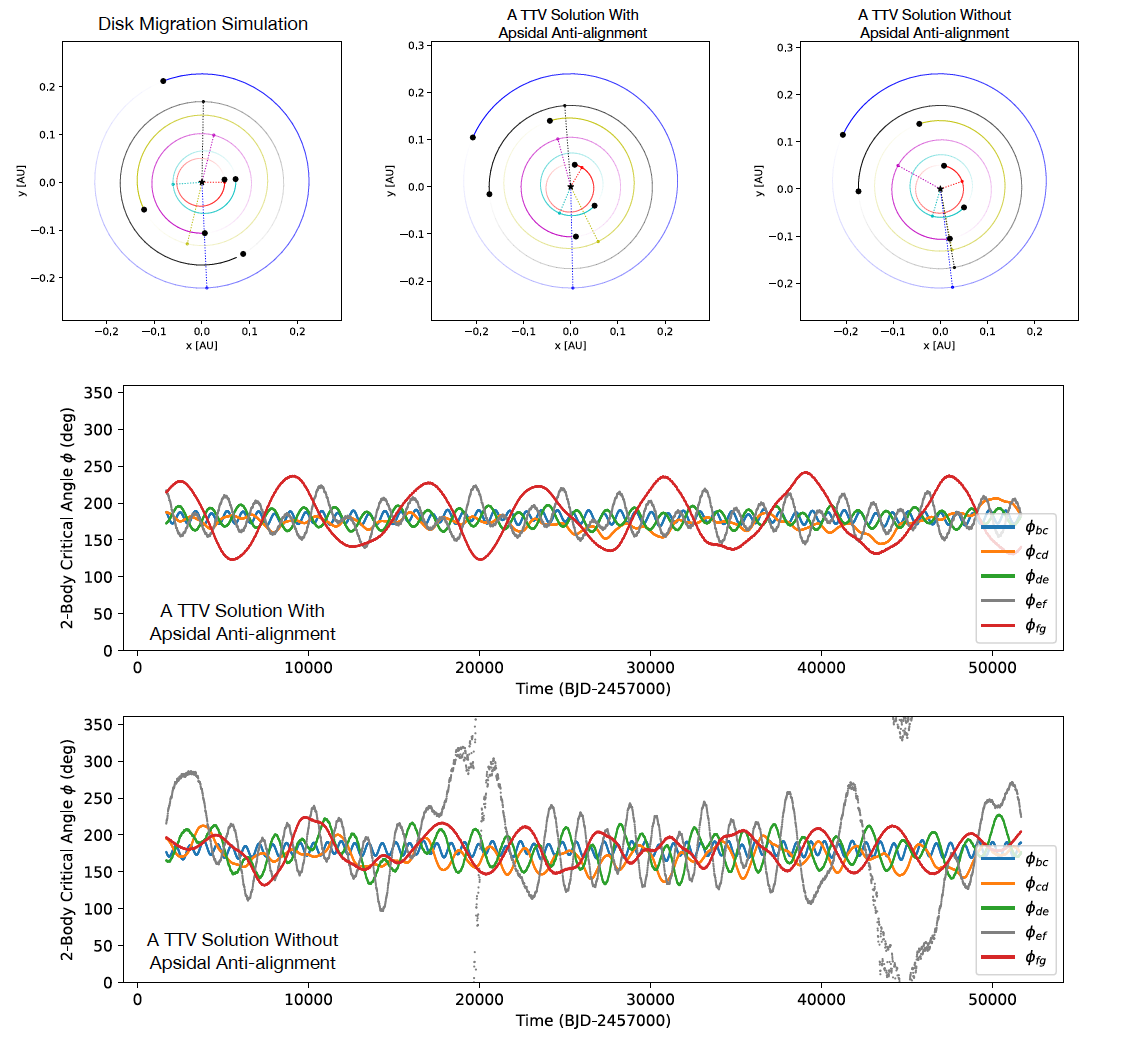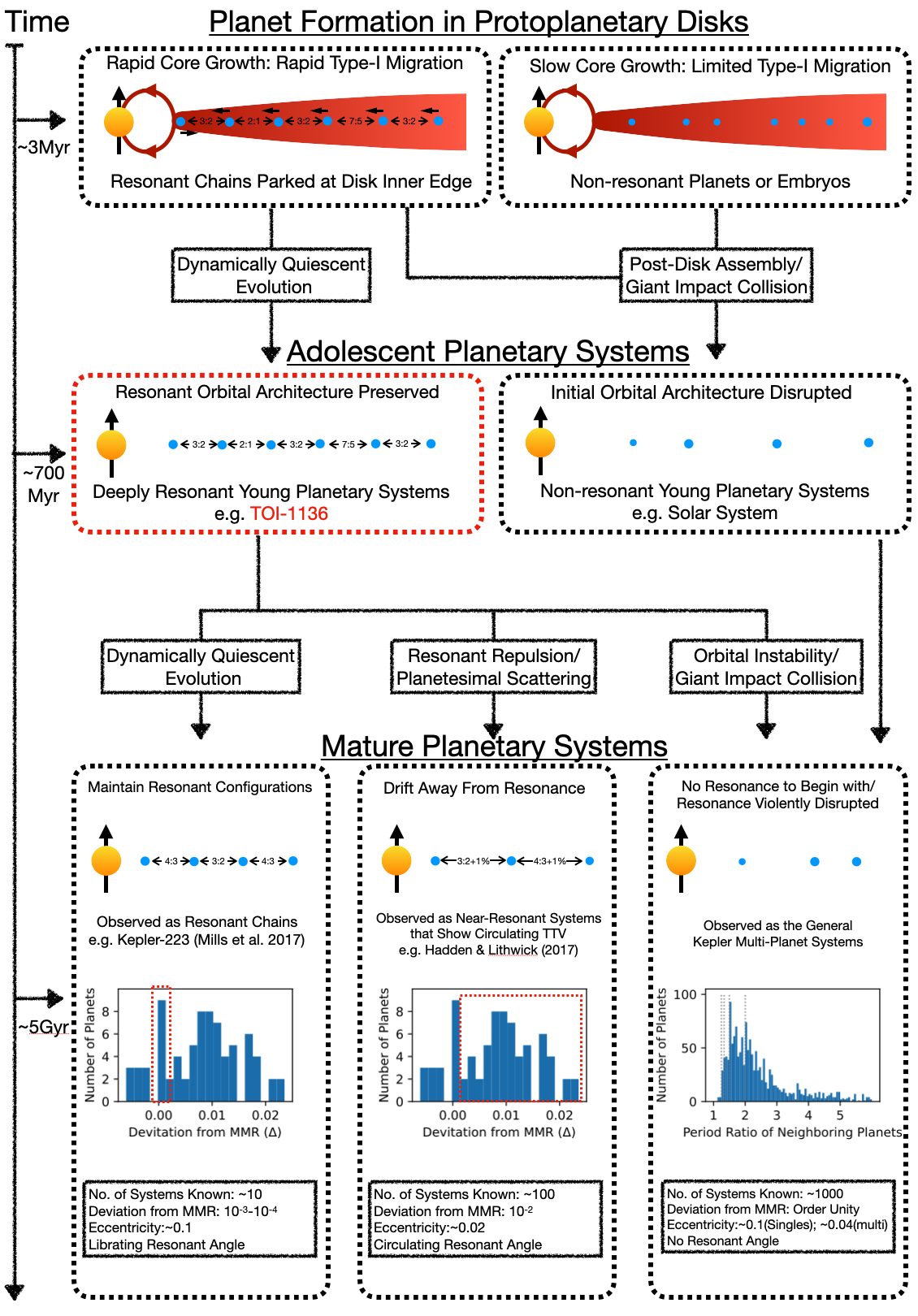Reconciling Disk Migration with the Architectures of Observed Planetary Systems
A central prediction of modern planet formation theory is that planets undergo migration while forming within a protoplanetary disk (e.g. Kley & Nelson 2012). This is due to the gravitational interaction between the planet and the disk. In most part of the disk, the net effect is migration towards the central star.
If multiple planets are forming simultaneously, they may undergo differential migration and become locked in mean-motion resonances (MMR). An MMR happens when the planets orbital periods are close to some small integer ratio. In resonance, their mutual gravitational perturbation phase up and accumulate over multiple orbits. The resonant interaction effectively acts as a potential well that traps the planets in resonance even as they continue migrating toward the central star, see the following video (Credit: Mills):

A tension exists between disk migration simulations and the architectures of observed multi-planet systems ( Izidoro et al. 2017). While simulations consistently yield an abundance of resonant chains, such configurations account for only a small fraction of the observed population ( Fabrycky & Winn 2015). The vast majority of Kepler and TESS multi-planet systems are non-resonant. Our Solar System also lack resonances among the planets.
A Young Planetary System in Deep Resonance: Evidence for Disk Migration
Previous studies have invoked a combination of planetesimal scattering, resonant repulsion, and orbital instability to disrupt the resonant configurations established by disk migration. These dynamical processes may require Giga years to unfold. Our recent discovery of TOI-1136, a young (700-Myr-old), six-planet system, offers a crucial missing link in this evolutionary picture ( Dai et al. 2023).

TOI-1136 is a young G-type star hosting at least 6 transiting planets with sizes between 2 and 5 R⊕. Their orbital period ratios deviate from exact commensurability by only 1e-4 i.e. two orders of magnitude smaller than the typical 1e-2 deviations observed in Kepler near-resonant systems. Through detailed analysis of the transit timing variations, we demonstrate that the planets in TOI-1136 occupy true resonances, with resonant angles that librate:

With period ratios near 3:2, 2:1, 3:2, 7:5, and 3:2, TOI-1136 represents the first known resonant chain to include a second-order mean-motion resonance (7:5) embedded between first-order resonances. The existence of this delicate 7:5 resonance places strong constraints on the system’s migration history, since second-order resonances are intrinsically much weaker than their first-order counterparts. Our analysis indicates that short-scale Type-I migration, beginning near ∼0.1 AU and truncated by an inner disk edge, is the most consistent scenario for TOI-1136’s formation. A relatively low disk surface density (Σ(1AU) ≲ 10³ g cm⁻², lower than the minimum-mass solar nebula) and the resulting slower migration rate likely enabled the capture into the 7:5 second-order resonance.

TOI-1136 is a pristine example of the orbital architecture established by disk migration, preserved before subsequent dynamical processes could disrupt it. In contrast, the terrestrial planets of our Solar System likely formed through a violent history of giant impacts that resulted in a non-resonant configuration. The discovery of TOI-1136 highlights the possibility of a dynamically quiescent evolutionary pathway that maintains the initial resonant chain. Such a history is in stark contrast to the chaotic assembly of our own Solar System.
